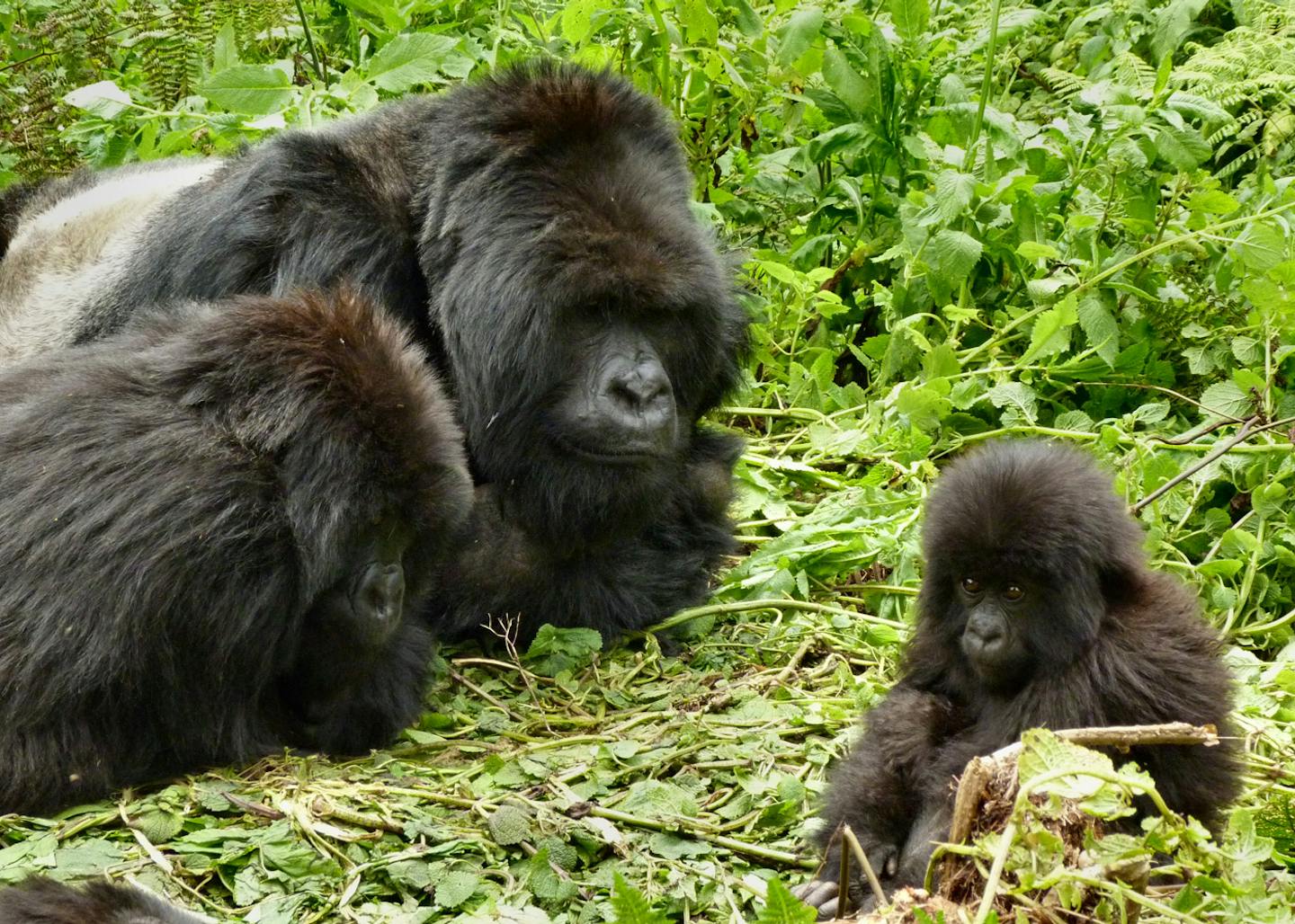Wild gorillas sing happy songs while they eat
Did you know that humans aren’t the only animals that hum while they eat? Food-related calls have long been documented in in birds and mammals, including great apes such as chimpanzees and bonobos. To see if gorillas engaged in similar vocals, researcher Eva Maria Luef of the Max Planck Institute for Ornithology sought to create the first scientific and detailed analysis of gorilla food-associated calling. During an expedition to the Republic of Congo, they recorded and an two groups of wild western lowland gorillas. Their work, published in PLOS One, identified a fun fact about gorillas: they hum and even sing during mealtime.
Specifically, Luef and her team identified two different types of sound that gorillas in the Congo made when eating. One of them was humming – a consistent low-frequency tone akin to the “mmm” that humans make. The other was singing — random mismatched notes, like someone singing an improvised ditty. “They don’t sing the same song over and over,” said Luef. “It seems like they are composing their little food songs.”
The vocalization seems to be a way for gorillas to express contentment with their meal, as well as for the head of the family to communicate to others that it is dinnertime. Each gorilla has its own distinct voice, and they sing louder for their favorite food.
Leuf found that while all gorillas in captivity sing while eating, in the wild, only dominant ‘silverback’ males sing, to inform the group that it’s mealtime and no one is excused. “He’s the one making the collective decisions for the group,” Luef told New Scientist. “We think he uses this vocalization to inform the others ‘OK, now we’re eating’.”
The variation in calls both between individuals and species shed light on the origins of language, and reflect the different social structures of the great apes.
In chimpanzee and bonobo societies, which tend to be more socially fluid, with individuals constantly making decisions about who they want to hang out with, everyone gets involved in dinner-time conversations. But in the wild gorilla community, the male dominates the conversation. According to Zanna Clay, a psychologist and zoologist who has studied communication in bonobos, these observations provide “a good insight into the origin of meaning in animal signals, and also the social pressures that might drive the flexibility we see in language.”

.png?auto=compress%2Cformat&w=200)

